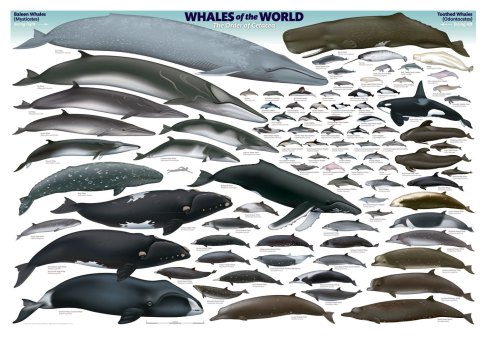 Whales, it turns out, play a key role in mitigating climate change.
Whales, it turns out, play a key role in mitigating climate change.
A recent article by Philip Hoare discusses the key role played by whale faeces in supporting rich communities of phytoplankton throughout the world’s oceans. These phytoplankton in turn absorb huge quantities of carbon dioxide.
Hoare’s article challenges the longstanding perception among humans that whales are their enemies – takers of their catch, scourges of the deep, embodiments of the devil. Instead, Hoare alludes to a recent study that shows that cetaceans immensely enrich the oceans on many levels, including by fertilizing them with their faeces.
Hoare challenges humanity’s hubris in scathing terms:
Such propositions speak to our own species’ arrogance. As demonstrated in the fantastical geoengineering projects dreamed up to address climate change, the human race’s belief that the world revolves around it knows no bounds. What if whales were nature’s ultimate geoengineers? The new report only underlines what has been suspected for some time: that cetaceans, both living and dead, are ecosystems in their own right. But it also raises a hitherto unexplored prospect, that climate change may have been accelerated by the terrible whale culls of the 20th century, which removed hundreds of thousands of these ultimate facilitators of CO2 absorption. As Greg Gatenby, the acclaimed Canadian writer on whales told me in response to the Vermont report, “about 300,000 blue whales were taken in the 20th century. If you average each whale at 100 tons, that makes for the removal from the ocean of approximately 30m tons of biomass. And that’s just for one species”.
These statistics concerning humanity’s genocidal war against order cetacea are chilling.  The best accounts I’ve found of the war on whales are in John Richards’ recently published The World Hunt and Callum Roberts’ Unnatural History of the Sea.
The best accounts I’ve found of the war on whales are in John Richards’ recently published The World Hunt and Callum Roberts’ Unnatural History of the Sea.
Pressure from environmental campaigners led to the suspension (with the exception of a few nations) of whale slaughter in the 1980s. Indeed, Hoare notes with satisfaction that cetaceans are on the rebound around the world. This increase, he suggests, might allow whales to once again play a significant role in mitigating climate change.
This optimistic prognosis unfortunately ignores the acidification of the oceans, one of the corollary effects of anthropogenic carbon emissions. As a result of the industrialized nations’ carbon emissions, the oceans are 30% more acidic than they were in 1800. If we continue with business-as-usual emissions, the oceans will be 150% more acidic by 2100 than they were at the start of the industrial revolution.
Ocean acidification impacts organisms that rely on calcium shells most dramatically. These include the krill and other microorganisms that whales feed on. As the oceans acidify, their numbers are likely to plummet, as Elizabeth Kolbert details in the “Sea Around Us” chapter of The Sixth Extinction.
Ocean acidification might be thought of as a form of violence that is both slow and microscopic, unfolding not simply across centuries but also on a scale so small that most humans are completely oblivious. Yet this microscopic violence is capable of devastating the lives of the largest and most majestic animals ever to have lived on Earth: the whales.
The planet’s cetaceans are on the rebound today. But in order for this new lease on life to be sustainable, the industrialized nations need to end their feckless policies of burning fossil fuels more or less immediately.